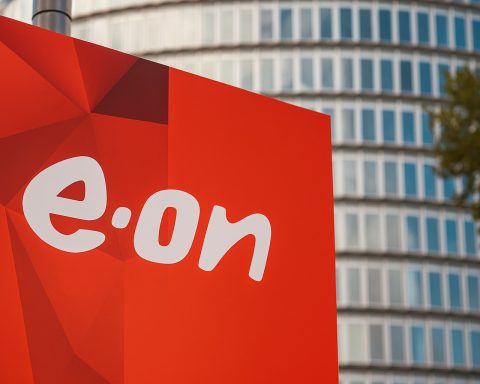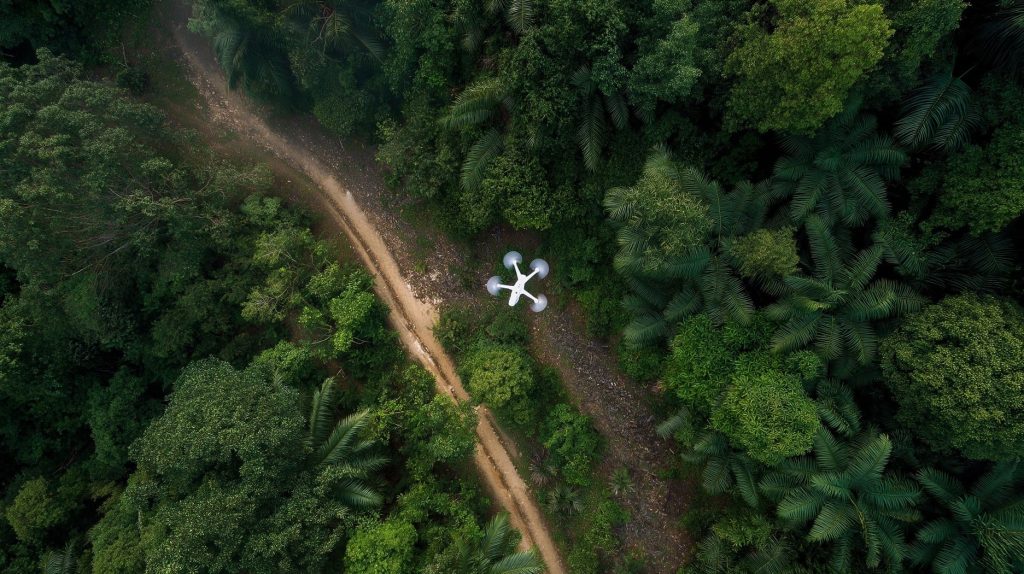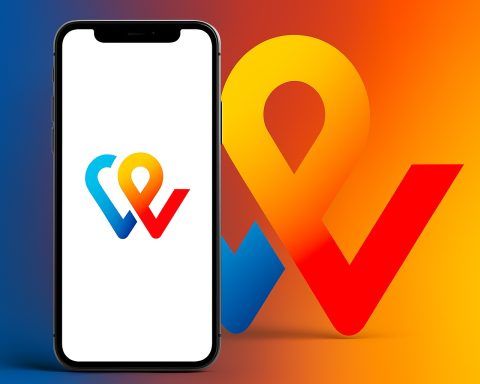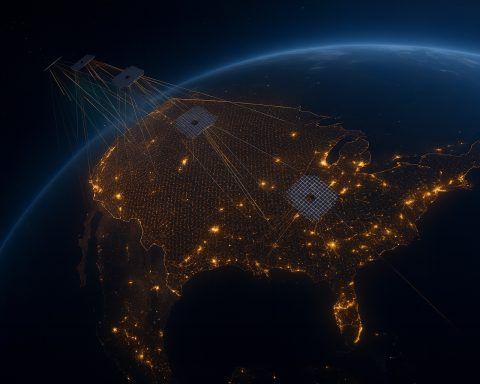- As of early 2024, about 8.74 million people in Switzerland were internet users, roughly 99% of the population.
- More than 96% of people aged 15–88 use the internet, and 51% of those aged 75+ report online daily.
- By the end of 2022, fixed broadband subscriptions reached 48.2 per 100 inhabitants, the highest rate in the OECD.
- The fixed broadband market is led by Swisscom with around 48% share in Q4 2022, followed by Sunrise about 28%, Salt around 4%, and Quickline plus regional networks about 13%.
- Fiber deployment covers about 46% of Swiss homes by 2023, with Swisscom targeting 57% by 2025 and 75–80% by 2030, while FTTH/B accounts for roughly 27% of subscriptions.
- Major cities like Zurich, Geneva, Basel, and Lausanne already offer fiber connectivity with multi-gigabit speeds up to 10 Gbps in many municipalities.
- 4G LTE coverage is essentially universal (over 99% of the population), and by 2022 Swisscom had ~99% population coverage with 5G, Sunrise ~96%, and Salt ~99.9% when counting 3G/4G/5G signals.
- The median fixed broadband speed was about 195 Mbps in early 2024, with low latency and consistently high performance in urban networks.
- Starlink has been available nationwide since around 2022, offering a CHF 50/month residential plan, CHF 250–350 for equipment (or CHF 10/month rental), Roam at CHF 59/month, and typical downlink speeds of 50–200 Mbps with 30–50 ms latency.
- The government’s National Broadband Strategy aims for 70–80% fiber coverage by 2030, the universal service obligation was upgraded to 80 Mbps download / 8 Mbps upload from 2024, and ComCom renewed Swisscom as the sole USO provider through 2031.
Switzerland boasts one of the world’s most connected populations, with internet penetration near universal levels. As of early 2024, around 8.74 million people (about 99% of the population) were internet users [1]. Even among older Swiss, adoption is high – over 96% of those aged 15–88 use the internet, and more than half of seniors over 75 are online daily [2]. This broad usage is supported by Switzerland’s advanced digital infrastructure, often placing the country at the top of international connectivity rankings. By the end of 2022, Switzerland led the OECD in fixed broadband penetration with 48.2 subscriptions per 100 inhabitants (versus an OECD average of 34.9) [3].
In this comprehensive guide, we provide an up-to-date overview of internet access in Switzerland as of 2025. We cover the state of fixed broadband (fiber, DSL, cable) – the major providers, their coverage, typical speeds and pricing. We also examine mobile internet (4G, 5G) offerings and performance, as well as the emerging role of satellite internet (Starlink and others) in reaching remote areas. Recent developments in infrastructure policy, including government initiatives for rural broadband and digital inclusion, are highlighted. We present key usage statistics and discuss the challenges (like mountainous terrain and cost) and opportunities (such as new technologies and public programs) in expanding Swiss internet access. Finally, we compare Switzerland’s connectivity landscape with European benchmarks and neighboring countries.
(Note: All prices are in Swiss Francs (CHF).)
Fixed Broadband Internet Access in Switzerland
Technologies and Providers: Switzerland’s fixed broadband is delivered via a mix of fiber-optic (FTTH) networks, legacy DSL/phone lines, and cable TV infrastructure. In recent years, fiber has expanded rapidly in cities and towns, while DSL and cable remain important in many areas. The market is served by a handful of major ISPs:
- Swisscom: The former incumbent and largest provider (~48% market share as of Q4 2022 [4]), offering nationwide DSL and an expanding fiber network. Swisscom’s “blue Internet” plans include DSL in copper-only areas and fiber in covered areas.
- Sunrise (formerly Sunrise UPC): The second-largest ISP (~28% share [5]), formed by the 2021 merger of telecom operator Sunrise with cable company UPC. Sunrise provides broadband over UPC’s cable network and via fiber in partnership with local utilities.
- Salt: A mobile operator turned disruptor in fixed broadband (~4% share [6]). Salt leases fiber capacity in many cities to offer ultra-fast internet (it does not operate DSL or cable). Salt made headlines by launching affordable 10 Gbit/s fiber plans.
- Quickline and Regional Networks: Quickline (a consortium of regional cable operators) and other local ISPs account for ~13% of the market [7]. Numerous city utilities and regional cooperatives (e.g. Init7, iWay, city-owned networks) provide fiber in their areas, often open-access for multiple providers.
Coverage and Speeds: Fixed broadband coverage is extensive in Switzerland’s populated areas. DSL (telephone-line broadband) reaches virtually all households, although speeds vary with location (rural DSL may only achieve tens of Mbps). Cable broadband (via DOCSIS over coax TV cables) covers a large portion of households (UPC’s network passed ~75% of homes pre-merger) and typically offers download speeds up to 1 Gbps (with lower upload speeds). Fiber deployment has accelerated in urban centers and many suburbs: by 2023, about 46% of Swiss homes were within reach of fiber, a figure Swisscom plans to increase to ~57% by 2025 and 75–80% by 2030 [8]. Major cities like Zurich, Geneva, Basel, Lausanne, and others already have fiber connectivity supporting multi-gigabit speeds (up to 10 Gbps in many municipalities) [9] [10]. However, Switzerland’s fiber penetration (FTTH/B making up ~27% of broadband subscriptions) is still below the OECD average of ~37.7% [11], due in part to earlier rollout delays. The table below summarizes the main fixed broadband options in 2025:
| Provider | Network Type | Top Speeds Offered | Typical Monthly Price | Coverage |
|---|---|---|---|---|
| Swisscom | DSL, VDSL & Fiber (FTTH) | DSL up to ~100 Mbps; Fiber 1–10 Gbps [12] | CHF ~65 for 100 Mbps, ~CHF 80–90 for 1 Gbps (fiber) [13] | Nationwide (DSL); Fiber in major towns (46% homes) [14] |
| Sunrise | Cable (DOCSIS) & Fiber | Cable up to 1 Gbps; Fiber up to 10 Gbps (select areas) | ~CHF 50 for 1 Gbps (cable/fiber) [15] | Cable in ~75% of households; Fiber via partners in cities |
| Salt | Fiber (leasing FTTH networks) | Fiber plans at 1 Gbps and 10 Gbps symmetric | CHF 49.95 for 10 Gbps (Salt Fiber) [16] [17] | Available on many city fiber networks (coverage growing) |
| Quickline & others | Cable & Fiber (regional) | Cable up to 1 Gbps; some fiber offerings up to 10–25 Gbps | ~CHF 30–50 for 100–500 Mbps (varies by provider) [18] [19] | Regional coverage (local cable networks, city fibers) |
Pricing: Broadband prices in Switzerland tend to be higher than EU averages, but competition is driving prices down, especially for high-speed plans. Swisscom, as the premium incumbent, charges around CHF 65 for a basic 100 Mbps plan [20] and closer to CHF 80–90 for its gigabit-tier plans (branded “blue Internet M/L”). Sunrise’s cable/fiber plans are often more affordable – for example CHF 49.90 for a 1 Gbps service [21]. Salt’s aggressive pricing has set a benchmark: CHF 49.95 per month for a 10 Gbit/s fiber connection (with free Apple TV included) [22]. Many smaller providers offer budget plans (e.g. 20 Mbps for ~CHF 30 [23], or 400 Mbps for ~CHF 40 [24] via Swisscom’s discount brands Wingo/M-Budget). Installation or activation fees are usually modest (Salt charges a CHF 77 setup for 10 Gbps [25]). Overall, customers have a range of choices, from entry-level plans under CHF 30 to premium bundles with TV/phone that can exceed CHF 100. Consumer comparison services help navigate these options in the “broadband Switzerland” market.
Quality and Performance: Swiss fixed internet quality is generally excellent. The median fixed broadband speed in Switzerland was about 195 Mbps download as of early 2024 [26] – a jump of +34% year-on-year, reflecting fiber adoption. Cable and fiber customers typically enjoy very low latency (ping times often <10 ms domestically) and unlimited data. Annual surveys (e.g. nPerf rankings) consistently rate Swiss ISPs among Europe’s fastest; in one 2024 assessment, providers like Salt, Swisscom, and Sunrise all delivered hundreds of Mbps in real-world average speeds [27] [28]. The main urban centers have the best performance, whereas some rural users on old DSL lines still experience much slower connections (in some remote villages, legacy DSL may only reach 3–30 Mbps [29]). Closing this urban-rural gap is a key focus of current policy (see Recent Developments below).
Mobile Internet Access (4G/5G)
Providers and Market: Switzerland’s mobile internet is provided by three nationwide operators – Swisscom, Sunrise, and Salt – which correspond to the same groups dominating fixed services. Swisscom leads with about 57% mobile market share, followed by Sunrise (~26%) and Salt (~16%) [30]. A few MVNOs (e.g. M-Budget on Swisscom’s network, Yallo on Sunrise) offer additional branded options, but they ultimately use the big three networks. Competition is robust, especially after Sunrise’s network consistently matched Swisscom’s in quality awards, leading to improved offers. Most mobile plans in Switzerland now include 4G LTE as standard and increasingly 5G access, often with unlimited data (albeit at premium prices).
Coverage and Network Technology: Switzerland was an early adopter of advanced mobile networks. 4G/LTE coverage is essentially universal – over 99% of the population is covered by LTE [31]. All carriers have largely retired older 2G/3G networks: GSM (2G) was shut off by Sunrise in 2023 and by Salt in 2021, and Swisscom will keep 3G only until end of 2025 [32] [33]. This frees up spectrum for 4G and 5G.
The 5G rollout in Switzerland is one of the most extensive in Europe. By the end of 2022, Swisscom had achieved 99% population coverage with its baseline 5G network, offering peak data rates up to 1 Gbps [34]. Sunrise wasn’t far behind, covering about 96% of the population with 5G by 2022 [35]. Even Salt, the smallest player, reached 99.9% population coverage if counting combined 3G/4G/5G signals (though its pure 5G footprint was smaller) [36] [37]. It’s important to note that Swiss operators distinguish between “basic” 5G (often using lower-frequency bands or 4G spectrum via DSS) and “5G+” which refers to high-speed 5G on dedicated mid/high bands (3.5 GHz and mmWave). Swisscom’s 5G+ network, for example, offers up to 2 Gbps speeds and covered over 81% of the population by end of 2023 [38] [39]. Sunrise similarly reports over 1,100 towns and locations with ultra-fast 2 Gbps-capable 5G as of 2022 [40]. Salt’s 5G rollout has been slower – as of early 2023, Salt’s 5G reached ~55% of the population with up to 1 Gbps service, and its limited 5G+ offering (up to ~1.7 Gbps) was live only in major cities [41]. The table below compares key network metrics:
| Mobile Operator | 4G LTE Coverage | 5G Coverage (Population) | Peak 5G Speeds | Notable Network Facts |
|---|---|---|---|---|
| Swisscom | ~99% of population [42] | ~99% (5G basic); 81% with 5G+ (≥2 Gbps) [43] | Up to 1 Gbps (basic 5G); 2 Gbps on 5G+ | #1 operator (57% share) [44]; won multiple network quality awards (Connect tests) |
| Sunrise | ~99% (with LTE-A) [45] | ~96% (5G up to 1 Gbps) [46]; extensive 2 Gbps zones | Up to 1 Gbps (nationwide); 2 Gbps in 1,100+ locations [47] | #2 operator (26% share); Connect magazine rated Sunrise’s 5G network “Exceptional” six times [48] [49] |
| Salt | 99.9% (with 3G/4G fallback) [50] | ~55% (5G, expanding) [51] | Up to 0.75 Gbps (wide 5G) [52]; 1.7 Gbps in select city centers [53] | #3 operator (16% share); leverages its own network (not using others), focusing 5G on urban areas |
Coverage data is as of ~2022–2023. All operators continue to upgrade sites; actual 5G coverage in 2025 is approaching parity among Swisscom and Sunrise (nearly nationwide), with Salt catching up.
Mobile Data Speeds and Usage: Thanks to these investments, Swiss mobile users enjoy excellent data speeds. Median mobile download speed stood around 83 Mbps in early 2024 [54] (among the fastest globally), and peak 5G speeds in cities often exceed several hundred Mbps. Customers are also using more data than ever: in 2023, Swiss mobile networks carried 2.1 billion GB of data, a ~12% jump from 2022 [55]. The average smartphone user consumes tens of GB per month (helped by the prevalence of unlimited plans). Despite heavy usage, network quality remains high; independent tests (Opensignal, Connect, nPerf) frequently place Swiss providers at or near the top in Europe for reliability and low latency.
Plans and Pricing: Mobile internet in Switzerland is generally provided via smartphone plans or mobile hotspot devices. Unlimited data plans are common, though at a premium. Swisscom’s flagship “inOne” mobile plans can cost around CHF 80–100 for full 5G unlimited service (with cheaper “light” options that cap speed). Sunrise and Salt offer aggressive deals – e.g. Salt’s Swiss Flat often promo-priced around CHF 30–50 for unlimited 4G/5G data, and Sunrise’s We Unlimited series in the CHF 50–80 range (sometimes discounted). All three operators also provide 5G home broadband (fixed wireless access) in areas without fiber: e.g. Swisscom’s 5G FWA router plans for rural customers, which can serve as a home internet alternative [56] [57]. Prepaid and budget brands (M-Budget Mobile, Yallo, Wingo) cater to cost-conscious users, with data bundles like 3–5 GB for CHF 20 or unlimited monthly around CHF 50. While Swiss mobile prices are higher than in many EU countries, the price-per-gigabyte value has improved greatly. Consumers benefit from frequent promotions (for instance, “50% off for life” deals on certain plans [58]) and the fact that even the entry-level plans tap into world-class networks.
Satellite Internet Access in Switzerland
While terrestrial networks cover most of Switzerland, satellite internet has emerged as a crucial option for certain scenarios – especially in remote Alpine regions and for users on the move. There are two main categories of satellite service available:
- Low-Earth Orbit (LEO) satellite internet: Represented by Starlink (SpaceX’s satellite constellation), operational in Switzerland since around 2022.
- Geostationary satellite internet: Offered historically via providers using satellites like Eutelsat or SES (e.g. services such as Eutelsat Konnect or Tooway), which have been available for years but with limited adoption.
Starlink: SpaceX’s Starlink service is fully available nationwide in Switzerland, providing broadband via a network of low-earth orbit satellites. Because the satellites orbit only ~550 km above Earth, Starlink can deliver much lower latency than traditional satcom – typically ~30–50 ms, vs 600+ ms on geostationary links [59]. Swiss Starlink users report download speeds usually around 100 Mbps (varying between ~50–250 Mbps) with uploads ~10–40 Mbps [60]. This is sufficient for streaming, video calls, and general use, albeit not as fast or consistent as fiber. Unlimited data is included for standard use within Switzerland [61]. As of mid-2024, a Starlink residential plan costs about CHF 50 per month [62], plus a one-time equipment purchase of ~CHF 250–350 for the dish and router kit [63] (or an option to rent hardware for CHF 10/month) [64]. Starlink requires a clear view of the sky; in mountainous terrain users must place the dish clear of obstructions (trees, cliffs) for a stable connection [65]. The big advantage of Starlink is ubiquitous availability – it can be used anywhere in Switzerland, from high alpine cabins to remote farms, making it “an interesting alternative to the slow basic coverage offered by Swisscom in remote locations” [66]. Indeed, there are still Swiss rural homes stuck with sub-10 Mbps DSL, and Starlink has become a popular solution for those seeking a faster link [67]. Starlink also offers a “Roam” (RV) plan (around CHF 59/month) for campers and caravans, which provides connectivity on the go across Switzerland (and abroad with a more expensive option) [68]. Looking ahead, SpaceX has partnered with Salt to eventually enable “Direct-to-Cell” satellite service in Switzerland, which from 2025 could allow ordinary phones to connect to satellites for basic connectivity [69] (this will initially support SMS/text and expand to voice/data later).
Traditional Satellite Providers: Prior to Starlink, a number of satellite broadband services were available in Switzerland via geostationary satellites. These include KA-SAT/Eutelsat (offering up to ~30–50 Mbps plans) and others. Such services often came with strict data caps or throttling, high latency (~600 ms+), and high costs, thus remaining a “last resort” for remote users. Swisscom, as part of its universal service mandate, has sometimes provided satellite links to fulfill the requirement of serving any location – but these legacy satellite connections were slow or data-limited and not comparable to terrestrial broadband [70]. With Starlink’s arrival, the use of geostationary options by consumers has further diminished. That said, companies like Swisscom and others maintain satellite backup links for resiliency, and OneWeb (partnering with Eutelsat) may introduce new satellite offerings aimed at enterprise or mobility markets in the future.
For context, the table below compares key features of Starlink vs a typical older satellite service in Switzerland:
| Service | Network | Availability | Speeds (down/up) | Monthly Cost | Notes |
|---|---|---|---|---|---|
| Starlink (Standard) | LEO satellite constellation (SpaceX) | 100% of Switzerland (requires clear sky view) | ~50–200 Mbps down, 10–40 Mbps up (low ~30ms latency) [71] | CHF 50 (unlimited data) [72]; +CHF ~250 hardware | Widely adopted since 2022; ideal for remote homes, travelers (Roam plan available) |
| Legacy Sat (e.g. Konnect) | Geostationary sat (Eutelsat KA-SAT) | 100% of Switzerland (clear view to southern sky) | ~20–50 Mbps down, ~5 Mbps up (very high latency) | ~CHF 50–100 (often data-capped) | Used for USO in remote areas before Starlink; high latency limits real-time use (VOIP, gaming) |
(Table values are approximate. “Legacy Sat” refers to traditional providers like Eutelsat/SES via local resellers.)
Adoption: Precise user numbers are not published, but Starlink usage in Switzerland has grown among remote households, alpine businesses (e.g. mountain lodges), and enthusiasts. It’s seen as a complement to the national infrastructure – valuable for the “white spots” that fiber or 5G have yet to reach. However, for the vast majority of Swiss homes that do have access to DSL, cable or fiber, terrestrial options remain more cost-effective and offer higher speeds and reliability. Satellite internet is therefore a niche but important part of Switzerland’s connectivity toolkit, ensuring that even a lone chalet in the Alps can get online in 2025.
Recent Developments in Internet Infrastructure and Policy
Switzerland’s government and telecom industry have been actively working to strengthen the country’s digital infrastructure, with a focus on rural access, fiber expansion, and new technologies. Below are some key developments and initiatives as of 2024–2025:
- National Broadband Strategy: The Swiss Federal Council has expressed concern about a potential “digital divide” between well-served urban areas and sparsely populated regions [73] [74]. In July 2023, a report highlighted that while about 80% of Swiss households already have access to “ultra-fast” internet (defined as ~100 Mbps or above) [75], market forces alone may not extend fiber to the hardest-to-reach 20%. To address this, the government set an ambitious goal to equip 70–80% of all homes with fiber by 2030 [76]. Achieving this will require significant investment – estimated between CHF 3.7 to 6 billion – much of which is not economically viable for private firms in remote zones [77]. A subsidization of about CHF 3.8 billion was recommended to fund rural fiber rollout [78]. These plans are part of the broader “Digital Switzerland” strategy to ensure no region is left behind.
- Universal Service Obligation (USO) Upgrade: Switzerland has a telecom universal service mandate to guarantee every resident access to basic telephony and internet. For 2018–2023, the minimum broadband speed under USO was 10 Mbps download / 1 Mbps up. Recognizing modern needs, the Federal Council revised the ordinance to dramatically raise the baseline: from 2024 onward, the universal service must include an option of 80 Mbps download / 8 Mbps upload [79]. In May 2023, ComCom (the regulator) renewed Swisscom’s role as the sole USO provider through 2031, with this expanded service offering [80] [81]. Practically, this means that if by 2024 a location has no high-speed connection, Swisscom must offer to connect it at 80 Mbps (using whatever technology is viable – be it fiber, 5G wireless, or even satellite) [82]. However, the USO remains a “safety net” – if an equivalent broadband service is already available from commercial networks, the USO obligation is considered fulfilled and the 80 Mbps option need not be offered there [83]. This encourages private investment while guaranteeing service in truly underserved spots. The inclusion of technology-neutral delivery (mobile or satellite) is notable, as it allows Swisscom to use 5G fixed wireless or Starlink-based solutions to meet the 80 Mbps mandate in difficult terrain [84]. The USO update reflects Switzerland’s commitment to broadband for all, aligning with the country’s high quality-of-life standards.
- Fiber Network Regulation and Legal Battles: A significant regulatory event was the resolution of a dispute over fiber network architecture. Historically, Swiss fiber builds often used a point-to-point (P2P) approach (multiple fiber strands per home) allowing easier wholesale access. In 2020, Swisscom attempted to deploy a cheaper point-to-multipoint (P2MP) single-fiber model for new rollouts. The Swiss Competition Commission (COMCO) ruled this could unfairly hinder other ISPs’ access, effectively blocking Swisscom’s P2MP rollout [85]. Swisscom appealed, but by November 2022 Switzerland’s highest court upheld the COMCO decision [86] [87]. Judges emphasized the “overriding public interest in non-discriminatory, non-monopolistic access to fiber” [88]. This court setback forced Swisscom to redesign its expansion to comply with the multi-fiber standard, causing some delays in 2021–2022. Swisscom has since resumed fiber construction “according to COMCO’s requirements” [89]. The company even slightly raised its fiber rollout targets after this pause: now aiming for 75–80% coverage by 2030 (up from a previous 70%) [90]. The resolution of this issue provides clarity for the industry and should accelerate cooperative ventures – for instance, Swisscom often co-invests with city utilities on neutral fiber networks, an approach likely to increase post-2022.
- 5G Rollout and Public Response: Swiss operators’ aggressive 5G deployment met some public resistance in the early days. Concerns over electromagnetic radiation led to protests and even local moratoria in a few municipalities around 2019–2020. The Federal Office for the Environment (BAFU) was involved in studying adaptive 5G antenna emissions, and the government opted not to immediately relax radiation exposure limits (which are stricter in Switzerland than many countries). Instead, it promoted transparency and monitoring. As of 2025, the initial backlash has subsided somewhat – partly because 5G antennas have been integrated without observable issues, and partly due to strong demand for mobile data (exacerbated by the pandemic-era shift to remote work). The government is preparing for the next spectrum auction (expected in 2026) to reallocate frequencies expiring in 2029, aiming to keep competition fair [91]. Overall, 5G is now a standard part of Switzerland’s infrastructure, with ongoing efforts to communicate its benefits and safety to the public.
- Rural Access and Innovation: Beyond fiber subsidies, there have been creative initiatives to connect Alps and countryside. Fixed Wireless Access (FWA) using 4G/5G is touted as a “more sustainable” interim solution for some villages – Swisscom has piloted combining 5G with existing DSL lines to boost rural broadband speeds, for example [92]. Community networks have also emerged – a notable case is the mountain village of Lenk, which launched a co-working space and marketed itself to digital nomads, leveraging newly improved internet links to attract visitors and residents (a trend supported by local and tourism authorities) [93]. Additionally, federal and cantonal programs are funding digital literacy and inclusion (ensuring that older adults, for instance, can confidently use the internet, given that virtually all citizens have access). Public Wi-Fi hotspots in libraries, transport hubs, and even on mountain transport (ski lifts, trains) have expanded, reflecting the expectation of connectivity everywhere.
Internet Penetration and Usage Statistics
Switzerland’s internet usage rates are among the highest in the world. Key statistics on penetration and usage include:
- Household and Individual Access: Virtually all Swiss households that want internet service have it available. Estimates for home internet penetration are around 95–98% of households (the few without internet are largely by choice). Measured by individuals, about 99% of the population were internet users in 2024 [94], up from ~85% in 2012. This includes 8.74 million users out of 8.82 million population [95] [96]. Such saturation puts Switzerland at the top globally for internet adoption. Even in the older demographics, usage is high: in 2021, 96% of people aged 15–88 were online, and notably 51% of those aged 75+ used the internet daily [97], showing strong digital inclusion of seniors. The small remaining gap is mostly among the very elderly (80+ age) and a few remote communities, which are shrinking over time.
- Broadband Penetration: By end of 2022, Switzerland had 48.2 fixed broadband subscriptions per 100 inhabitants [98] – the highest rate in the OECD. In other words, nearly half the population has a fixed broadband line, which translates to almost every household (since households average >2 people). This figure outpaced countries like France (46.6) and Norway (45.7) and was well above the OECD average (~34.9) [99]. It reflects widespread adoption of DSL/cable/fiber in Swiss homes and businesses. On the mobile side, there were 10.77 million active mobile data connections in early 2024, equivalent to 122% of the population [100]. Many people have multiple mobile subscriptions (work and personal, or phone + tablet, etc.), hence >1 subscription per capita. Mobile broadband usage (3G/4G/5G subscriptions) also stands near 100% of the population when counting unique users.
- Internet Usage Patterns: Swiss internet users are very active and diversified in their online activities. According to surveys by University of Zurich’s World Internet Project, over 87% of users regularly look up information on online encyclopedias, 85% read news online, and 77% use online banking [101] [102]. E-commerce is well-established: roughly 82% shop online and 76% compare prices online [103]. The multilingual Swiss population also consumes a variety of content (German, French, Italian and English content sites are popular). Social media usage is high at ~78% of population (6.92 million social media users in 2024) [104], though privacy-conscious Switzerland has its own trends (LinkedIn is more popular relative to Facebook than in some countries, for instance, and Swiss-made messaging app Threema has a niche). The average time spent online per day is substantial, and services like Netflix, YouTube, and Spotify have broad uptake thanks to fast connections.
- Data Consumption: Fixed broadband users in Switzerland enjoy unlimited data plans, and many households now use fiber or cable for UHD streaming, cloud backups, etc. While exact figures per user are not always disclosed, Swisscom noted continued growth in data traffic across both fixed and mobile. Mobile data usage in particular has exploded – total mobile data was about 2 exabytes (2×10^18 bytes) in 2023 [105], which implies per capita mobile usage well above global averages. The rise of 5G and affordable unlimited mobile plans means some consumers use mobile internet almost interchangeably with fixed lines. Switzerland also had about 5.5 million 5G devices active by end of 2023 [106], indicating a rapid migration to 5G-capable smartphones.
- Regional Differences: Thanks to the near-ubiquity of service, there is relatively little regional disparity in whether people are online – urban and rural populations both have >90% internet usage. However, there is a difference in the quality of connections (rural users more likely on slower DSL or 4G, urban users on gigabit fiber). The ongoing infrastructure programs aim to minimize these differences. Notably, the Italian-speaking canton of Ticino and some mountain areas were slightly behind on fiber rollout, but initiatives are in place to upgrade these regions. Moreover, the federal structure and local utilities have meant some smaller cities (e.g. St. Gallen, Biel, La Chaux-de-Fonds) punched above their weight by deploying citywide fiber early.
Challenges and Opportunities in Expanding Access
Despite Switzerland’s strong connectivity metrics, several challenges remain in ensuring equal, high-quality internet access across the country – as well as opportunities to leverage new technologies and initiatives:
- Geographic Challenges: The Swiss Alps and rugged terrain mean that extending physical infrastructure to every corner is costly. Laying fiber through mountains, tunnels, or sparsely populated valleys can be slow and expensive. Some remote hamlets might only have a handful of residents, raising the cost per connection. Winter weather and avalanche/rockfall risks add maintenance challenges. To address this, providers increasingly use hybrid solutions – e.g. running fiber to a village then using wireless links (FWA or even point-to-point radio) to reach isolated farms. Satellite internet (Starlink) is a direct opportunity here, providing an immediate leap to broadband in places fiber won’t reach for years, although it comes with higher latency and potential congestion as more users join.
- Infrastructure Investment and Collaboration: As noted, a large investment (potentially CHF 4–6 billion jointly by public and private sectors) is needed to hit the 2030 fiber goals [107] [108]. The challenge is to coordinate between federal, cantonal, and municipal authorities, and between incumbents and local utilities. The environment is favorable for public-private partnerships, and we see many already: e.g. Geneva’s city fiber network (SIG) partnering with Sunrise and others, or electric companies in rural cantons adding fiber to their grids. The opportunity here is to create open-access networks that multiple ISPs can use, increasing competition and lowering prices in the long run. The legal clarity after Swisscom’s court case means alternate operators should get fair access, encouraging them to market innovative services on new fiber lines (for example, Init7 offering 25 Gbps connections on networks where available [109]).
- Affordability and Digital Inclusion: While most Swiss can afford internet subscriptions (the country’s high income levels help), affordability can be a challenge for low-income groups, especially given the historically high prices. An internet subscription of CHF 60–80/month can be burdensome for some (like students or pensioners). This has been recognized as a social issue: some charities and even telecom companies offer discounted plans or device subsidies for those in need. There are also programs targeting older citizens to improve digital literacy – ensuring that having access translates to meaningful use. Libraries and community centers offer courses for seniors to learn internet skills, banking apps, etc. Because internet usage is so high, the remaining non-users tend to be those with either economic or educational barriers, so outreach continues in those areas. The Swiss universal service also indirectly tackles affordability by capping the price of the basic service (the 10 Mbps USO service had to be offered at an “affordable” rate). As of 2024, Swisscom’s USO 10 Mbps plan is around CHF 55, and it’s expected the new 80 Mbps option will be offered at a reasonable price point to encourage uptake [110] [111].
- Public Perception and Health Concerns: One ongoing challenge, particularly with mobile network expansion, is managing public concern about electromagnetic radiation. Switzerland has very strict radiation exposure limits for cell towers (far stricter than EU average), which in some cases limits the rapid rollout of high-band 5G because new antennas might exceed these limits in dense areas. The government has been exploring ways to adapt regulations – for instance, allowing adaptive “smart antennas” that direct beams and potentially updating radiation norms without compromising safety [112]. The opportunity here is to educate and involve communities in planning new sites, and to highlight the benefits (better connectivity, remote work capability, emergency communications) that modern networks bring. So far, Swiss telecoms have maintained a relatively positive public image by communicating transparently and participating in dialogues on health/environmental issues (e.g., sharing data on 5G emission measurements).
- Remote Work and Economic Decentralization: The COVID-19 pandemic accelerated remote work acceptance in Switzerland, as in many countries. This revealed both a challenge and an opportunity: suddenly, high-bandwidth home connections became essential for productivity, and people considered living further from city centers. The challenge was ensuring residential networks could handle increased load (they did – Swiss networks held up excellently, with only minor slowdowns). The opportunity is that robust internet can enable economic activity in rural areas. We already see this with “Work from the Alps” initiatives. If a mountain village has gigabit internet and good transport links, some professionals might choose to live or spend more time there, boosting the local economy. Canton-led projects like “Alpine Coworking” spaces, tech incubators in smaller cities, and encouragement of e-government services all capitalize on Switzerland’s digital backbone to strengthen regional development.
- Technological Innovations: Switzerland’s tech-friendly environment means new solutions are quickly tried. 5G mmWave (very high frequency 5G for extreme speeds) is being tested in locations like Zurich Airport and events, which could in future deliver multi-gigabit wireless service. Wi-Fi 6E/7 deployment in homes and public areas will further improve local wireless capacity. The country’s high fiber backbone also makes it ready for the next bandwidth-hungry applications – whether that be widespread VR/AR usage, autonomous vehicle infrastructure (which needs fast mobile links), or advanced telemedicine in remote clinics. Each of these is an opportunity that builds on the internet access foundation.
In summary, Switzerland’s main challenges revolve around the last few percent of coverage and ensuring equitable access (geographically and socially). The opportunities lie in leveraging the near-ubiquitous connectivity to drive innovation and quality of life – from smart-city projects in Geneva to smart-village pilots in Graubünden. With strong public-private collaboration and a tech-savvy populace, Switzerland is well positioned to surmount remaining hurdles and further cement its status as a digital leader.
Switzerland vs. Europe: A Connectivity Comparison
How does Switzerland stack up against its European neighbors in internet connectivity? Overall, quite strongly. Here’s a brief comparison on key points:
- Broadband Penetration: Switzerland is #1 in Europe (and OECD) for fixed broadband subscriptions per capita [113]. Its ~48% per 100 people penetration beats countries like France (~46%), UK (~41%), and EU average (~34%). This is partly due to high household coverage and many people taking both fixed and mobile data plans. Neighboring countries like Germany and Italy have significantly lower fixed broadband per capita (Germany’s is around German’s heavy reliance on mobile broadband in some areas). Virtually all Swiss homes have at least one broadband connection, a level only a few Nordic countries and the Netherlands also approach.
- Fiber Deployment: In pure FTTH terms, Switzerland was mid-pack in 2022 – about 27% of broadband subscriptions were over fiber [114]. This lags leading fiber nations like Spain, Sweden, or France (which have 40–60% fiber adoption) but is ahead of Germany and the UK (which at that time were <20%). However, Switzerland’s widespread cable and VDSL networks delivered high speeds even without fiber to every home. With the recent push, Switzerland is catching up on fiber – by 2025 it will likely surpass 50% coverage, on par with advanced EU peers. The commitment to 75% fiber by 2030 will put it near the top.
- Internet Speeds: Swiss broadband speeds are among Europe’s best. The median fixed speed ~195 Mbps [115] outranks most EU countries; for example, France’s median is around 120 Mbps, Germany’s ~80 Mbps (due to many legacy DSL lines), and even fiber-rich Sweden is ~150+ Mbps. On mobile, Switzerland’s median ~83 Mbps [116] is similar to or higher than that of EU leaders like the Netherlands or Norway. Swisscom and Sunrise frequently win RootMetrics and Opensignal awards for network speed and availability. While some European countries have pockets of faster service (e.g. cities in Romania or Spain with 10 Gbps fiber widely), Switzerland’s strength is consistency – urban or rural, one can expect solid broadband, which is not the case everywhere in Europe.
- Pricing: Here Switzerland has traditionally been more expensive. The average cost of broadband or mobile plans in Switzerland is higher than the EU average. For instance, a Swiss triple-play (internet/TV/phone) might be CHF 80–100, whereas in France or Italy similar packages can be EUR 30–50. Mobile data in Switzerland used to cost much more per GB than in France or Finland, for example. However, this gap is narrowing: aggressive offers by Salt and Sunrise have introduced mid-range price options, and EU roaming rules have indirectly pressured Swiss prices (Swiss providers now offer packages with EU roaming included to stay attractive). Still, on a price benchmark, Switzerland is not the cheapest – but given higher incomes, the relative affordability is a complex comparison. Importantly, Switzerland’s quality of service is often cited to justify the cost. In European Commission digital integration indices (DESI), Switzerland (though not EU) would score high on usage and human capital, slightly less on price value.
- Usage and Digital Skills: Switzerland’s internet usage (99% of adults) is higher than the EU average (~91%) and even higher than any individual EU country – basically tied with the most connected (Nordics). Its population also has very strong digital skills; a high proportion are comfortable with online banking, e-government (e.g. tax filings), etc. In cross-country surveys, Switzerland usually ranks in the top tier for safe internet practices and privacy awareness. One area it lags a bit is e-government usage compared to say Estonia, but that is improving.
- Unique Factors: Unlike EU countries, Switzerland is not part of the EU Roam-like-at-home mobile agreement, so roaming between Switzerland and EU isn’t free – though many Swiss plans bundle some roaming or companies have bilateral deals. In terms of regulation, Switzerland often mirrors EU telecom rules but has its own nuances (like stricter radiation limits). Compared to immediate neighbors: France and Italy have made huge fiber strides (France nearing universal fiber by 2025), so in a few years they may challenge Switzerland on fixed network quality (albeit from a lower penetration base). Germany has been slower in fiber, so many German rural areas still suffer low speeds that Swiss rural areas may avoid thanks to 5G or upcoming fiber. Austria is similar to Switzerland in terrain and has decent coverage but lower fiber reach. Switzerland’s advantage is that it had strong cable and VDSL early, whereas some EU countries had to leapfrog from slow ADSL to fiber.
In conclusion, Switzerland is ahead of most of Europe in connectivity, especially in usage, coverage, and average speeds, while a bit behind a few peers in fiber-to-the-home proportion. It serves as a model in many respects, demonstrating how a combination of incumbent investment and competitive challengers can yield near-universal high-speed internet – albeit at a higher price point that comes with a high standard of service. With ongoing investments and policies, Switzerland is likely to maintain a top spot in Europe’s digital rankings through 2025 and beyond, ensuring its “digital backbone” remains one of the continent’s strongest.
Sources:
- Federal Communications Commission (ComCom) & OFCOM Switzerland – market data and reports [117] [118] [119] [120]
- Swiss Federal Council / Swissinfo.ch – rural broadband expansion plans (2023) [121] [122]
- Swisscom Annual Report 2023 – network coverage and fiber targets [123] [124]
- Internet-offer.ch – coverage and plan comparisons (2024) [125] [126] [127]
- Moneyland.ch – Starlink in Switzerland Q&A (2024) [128] [129]
- DataReportal – Digital 2024 Switzerland overview [130] [131]
- Wikipedia: Internet in Switzerland (updated 2023) [132] [133] and references therein.
References
1. datareportal.com, 2. en.wikipedia.org, 3. en.wikipedia.org, 4. en.wikipedia.org, 5. en.wikipedia.org, 6. en.wikipedia.org, 7. en.wikipedia.org, 8. www.swisscom.ch, 9. en.wikipedia.org, 10. en.wikipedia.org, 11. en.wikipedia.org, 12. en.wikipedia.org, 13. www.internet-offer.ch, 14. www.swisscom.ch, 15. www.internet-offer.ch, 16. thepoorswiss.com, 17. www.besteabos.ch, 18. www.internet-offer.ch, 19. www.internet-offer.ch, 20. www.internet-offer.ch, 21. www.internet-offer.ch, 22. www.internet-offer.ch, 23. www.internet-offer.ch, 24. www.internet-offer.ch, 25. thepoorswiss.com, 26. datareportal.com, 27. www.internet-offer.ch, 28. www.internet-offer.ch, 29. www.moneyland.ch, 30. en.wikipedia.org, 31. en.wikipedia.org, 32. en.wikipedia.org, 33. www.internet-offer.ch, 34. en.wikipedia.org, 35. en.wikipedia.org, 36. en.wikipedia.org, 37. www.internet-offer.ch, 38. www.swisscom.ch, 39. www.swisscom.ch, 40. www.internet-offer.ch, 41. www.internet-offer.ch, 42. en.wikipedia.org, 43. www.swisscom.ch, 44. en.wikipedia.org, 45. www.internet-offer.ch, 46. en.wikipedia.org, 47. www.internet-offer.ch, 48. www.internet-offer.ch, 49. www.internet-offer.ch, 50. www.internet-offer.ch, 51. www.internet-offer.ch, 52. www.internet-offer.ch, 53. www.internet-offer.ch, 54. datareportal.com, 55. www.bakom.admin.ch, 56. telecomtalk.info, 57. telecomtalk.info, 58. www.salt.ch, 59. www.moneyland.ch, 60. www.moneyland.ch, 61. www.moneyland.ch, 62. www.moneyland.ch, 63. www.moneyland.ch, 64. www.moneyland.ch, 65. www.moneyland.ch, 66. www.moneyland.ch, 67. www.moneyland.ch, 68. www.moneyland.ch, 69. www.moneyland.ch, 70. www.moneyland.ch, 71. www.moneyland.ch, 72. www.moneyland.ch, 73. www.swissinfo.ch, 74. www.swissinfo.ch, 75. www.swissinfo.ch, 76. www.swissinfo.ch, 77. www.swissinfo.ch, 78. www.swissinfo.ch, 79. telecomtalk.info, 80. telecomtalk.info, 81. telecomtalk.info, 82. telecomtalk.info, 83. telecomtalk.info, 84. telecomtalk.info, 85. www.swissinfo.ch, 86. www.swissinfo.ch, 87. www.swissinfo.ch, 88. www.swissinfo.ch, 89. www.swissinfo.ch, 90. www.swisscom.ch, 91. www.comcom.admin.ch, 92. www.swisscom.ch, 93. www.euronews.com, 94. datareportal.com, 95. datareportal.com, 96. datareportal.com, 97. en.wikipedia.org, 98. en.wikipedia.org, 99. en.wikipedia.org, 100. datareportal.com, 101. en.wikipedia.org, 102. en.wikipedia.org, 103. en.wikipedia.org, 104. datareportal.com, 105. www.bakom.admin.ch, 106. www.swisscom.ch, 107. www.swissinfo.ch, 108. www.swissinfo.ch, 109. en.comparis.ch, 110. www.bakom.admin.ch, 111. www.telecompaper.com, 112. omdia.tech.informa.com, 113. en.wikipedia.org, 114. en.wikipedia.org, 115. datareportal.com, 116. datareportal.com, 117. en.wikipedia.org, 118. en.wikipedia.org, 119. en.wikipedia.org, 120. en.wikipedia.org, 121. www.swissinfo.ch, 122. www.swissinfo.ch, 123. www.swisscom.ch, 124. www.swisscom.ch, 125. www.internet-offer.ch, 126. www.internet-offer.ch, 127. www.internet-offer.ch, 128. www.moneyland.ch, 129. www.moneyland.ch, 130. datareportal.com, 131. datareportal.com, 132. en.wikipedia.org, 133. en.wikipedia.org















